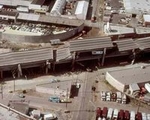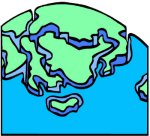
Worksheets and No Prep Teaching Resources
Reading Comprehension Worksheets
Earthquakes

Earthquakes
 Worksheets and No Prep Teaching Resources Reading Comprehension Worksheets Earthquakes |
 Earthquakes |
| edHelper's suggested reading level: | grades 5 to 7 | |
| Flesch-Kincaid grade level: | 9.61 |
|
Passing Plates I - The Theory
By Trista L. Pollard |

|
 1 You have heard of dinner plates, dessert plates, and license plates. However, did you know that our earth has its own set of plates under its surface? In 1912, German meteorologist Alfred Wegener thought so. In fact, he was the first to propose the continental drift theory.
1 You have heard of dinner plates, dessert plates, and license plates. However, did you know that our earth has its own set of plates under its surface? In 1912, German meteorologist Alfred Wegener thought so. In fact, he was the first to propose the continental drift theory. |
Create Weekly Reading Books
Prepare for an entire week at once! |
| Leave your feedback on Passing Plates I - The Theory (use this link if you found an error in the story) |
 |
Earthquakes
|
 |
Science
|